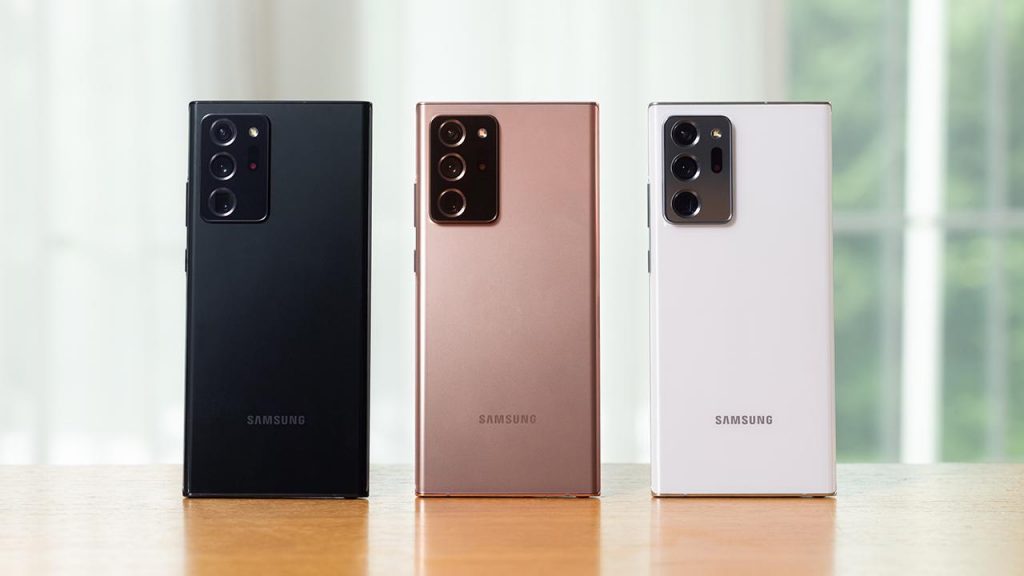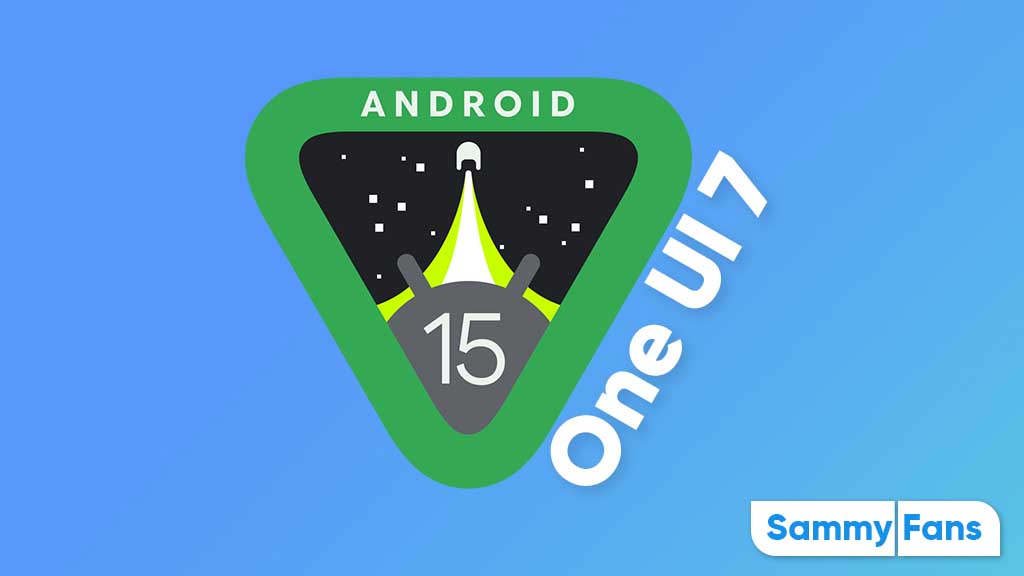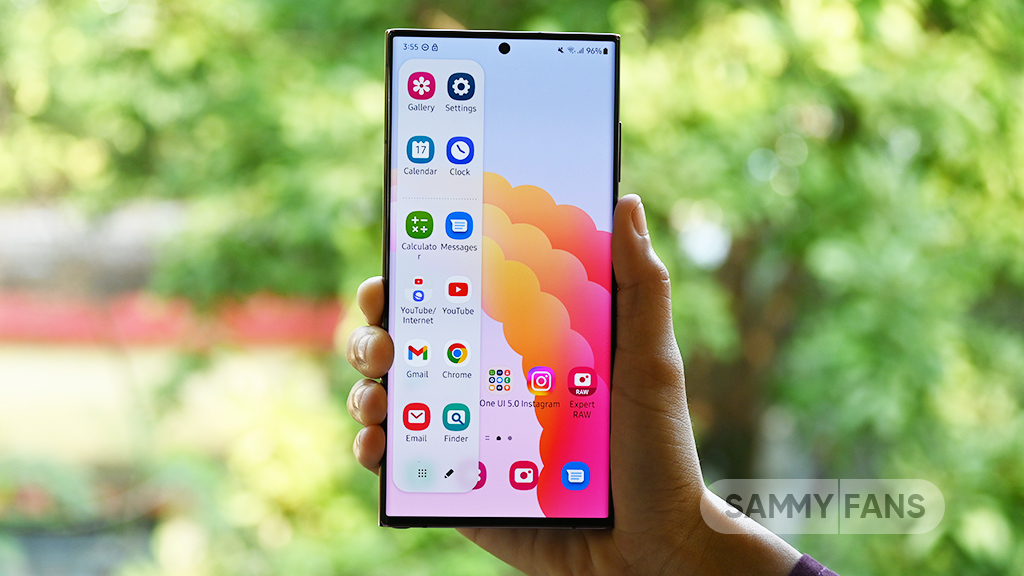Tips
How to save battery life of your Samsung Galaxy Note 20 or Note 20 Ultra

Samsung Galaxy Note 20 series is more than ever a meaningful device that helps people create, and connect more easily so they can work, play, and stay in touch with everyone from anywhere.
The Note 20 series is making adapting to the next normal even easier by building on the heritage of the Note 20 series and delivering a unique experience designed for users that want to get more done and enjoy premium entertainment in the palm of their hands from anywhere they desire.
Similarly, Samsung also offers the Galaxy’s High-quality, High-performance Battery. Every Samsung mobile device is equipped with a high-quality to strengthen your Galaxy experience.
In terms of battery capacity, Samsung Galaxy Note 20 equipped with a 4300mAh and Galaxy Note 20 Ultra has 4500mAh battery life.
Read More: Samsung Galaxy S10 series One UI 3.0/Android 11 update status
You can check battery information such as how much time is left on your battery, switch to Power Saving Mode, or set app permissions to run in the background by going to Settings > Device Maintenance > Battery.
The tips below will show you how to get the best out of your Samsung Galaxy Note 20 series battery in everyday usage.
Adjust display settings
Adjusting the display setting in Galaxy Note 20 series to the long screen time-out settings or high display brightness can substantially reduce battery time.
Lower your brightness setting by pulling down the notifications menu and using the slider to adjust the brightness. You shouldn’t need full brightness unless you are outside in direct sunlight.
Brightness
- Go to Settings,
- Then tab to Display.
- Adjust the slider until you reach your desired brightness.

Reduce the screen refresh rate
A higher screen refresh rate such as 120Hz, allows you to enjoy an enhanced experience while reading articles, watching movies, and playing games. On the flip side, it also consumers a massive amount of battery life to give you a perfect graphics performance. However, turning off the high refresh rate could help you to greatly reduce the power consumption and provides you more long battery performance.
Adjust the refresh rate
- From Settings, search for and select Motion smoothness.
- Tap Motion smoothness again, and then choose your desired option.
- Standard refresh rate – 60 Hz refresh rate, use this if you want to save your battery life.
- High refresh rate or Adaptive – 120 Hz refresh rate, which will have all the benefits we discussed.
Note: 120 Hz refresh rate is not supported on WQHD+ resolution. If you switch to this resolution, the refresh rate will drop to 60 Hz.
Reduce Display resolution:
Similar to a Higher refresh rate, Samsung Galaxy Note 20 Ultra also comes with Quad HD+ resolution, which allows you to watch content in high quality but it also takes a big part of Note 20 Ultra’s battery life.
- Swipe down the notification panel and tap on the Setting icon.
- Scroll down and tap on Display.
- Tap on Screen resolution.
- Choose resolution:
- HD+ (1544×720)
- FHD+ (2316×1080)
- WQHD+ (3088×1440)
Turn off Always On Display (AOD) or set schedule
Always On Display or AOD uses AMOLED displays to show you certain information when your screen is ‘off’. It allows you to easily check basic information such as date and time without activating the display.
Naturally, any activity that makes your screen turn on all the time will consume some power from your battery. You can choose to turn off AOD or set a time schedule for AOD to turn on/off.
To turn off AOD:
- Go to Settings > Lock screen and security > Lock screen and Always On Display.
- Turn off AOD by tapping on the AOD slider.
Power Saving Mode
Your device has a Power Saving Mode. Power Saving Mode differs slightly between devices but generally, it will close all unnecessary apps and screens so that you can essentially increase your battery time.
To enable Power Saving Mode in Note 20 series, follow the below steps:
Medium power-saving mode
- From Settings, search for and select Battery.
- Tap Power mode and then tap Medium power saving, review the mode’s settings, and then tap Apply.
Maximum power-saving mode
- From Settings, search for and select Battery.
- Tap Power mode.
- Then tap Maximum power saving, review the mode’s settings, and then tap Apply.
Optimized power-saving mode
- From Settings, search for and select Battery.
- Tap Power mode, and then tap Optimized.
Device data synchronize
Samsung Galaxy consists of a number of apps. Out of that, email, or social media, these apps will frequently sync, or check for new emails or updates. Frequently syncing can reduce your battery life.
To check the sync settings in Galaxy Note 20 series in your apps or email, and ensure they only sync as often as you need them to.
Disable Auto Sync
- Go to Settings.
- Choose Cloud and accounts.
- Choose Accounts.
- Tap three dots for more options.
- Tap Disable auto-sync to turn off auto-sync of all accounts.
Number of signal bars
If you use your device for long areas of poor response, your device will use more power to communicating with your network operator.
The use of mobile data in areas with a low signal can use a lot of power. Switch off mobile data if you are running short of battery and don’t need it.
Wi-Fi, Bluetooth, and GPS
Switch off Wi-Fi, Bluetooth, and GPS if you don’t need them, as each regularly checks for a signal which uses power.
You can switch each of these off by pulling down the drop-down menu and tapping the relevant icon.
Apps and Multimedia
Apps and content that keep the device awake over an extended period of time can quickly drain the battery (e.g.playing games or watching movies). Some apps are particularly power-hungry, especially if they use features like GPS.
Ensure you close apps when not in use, and if you are out and about and using apps that you know are power-hungry, consider investing in a rechargeable battery pack if you do not expect to have anywhere to charge your device.
Charging your device in the right way
If your battery is charging slower than you expect, make sure you are using the right charger as the amperage on chargers can differ.
– Always use an official Samsung charger, preferably the one that came in the box. If you need to replace your charger, check that the amperage of your new charger is appropriate for the model of your device.
– The power output of where you plug in your device will also affect charging time. Charging your device directly from a power outlet will charge it faster than if you plug it into your laptop.
Minimize hot and cold exposure.
Extreme heat and cold can damage your battery. And continuous use or charging in extreme temperatures may accelerate battery temperature. Samsung’s battery is designed to perform best at 0°-35°C.
Battery saving mode
- From the Home screen, swipe up on an empty spot to open the Apps service.
- Tap Settings > Device care > Battery.
- Tap Power mode then selects from the following:
- High performance
- Optimized
- Medium power saving
- Maximum power saving
- Tap Adaptive power saving to turn on / off.
Some more tips to save battery life
- Turn off background data.
- Turn off Wi-Fi, Bluetooth, GPS, and Smartphone Mobile Hotspot.
- Uninstall unused apps.
- Update to the latest software.
Set device to sleep when unused
- Press and then quickly release the Power key to set the screen to sleep mode.
Quick optimization
The quick optimization feature improves device performance through the following actions:
Optimized: Get the recommended balance of performance and battery life.
Medium power saving: Extended battery life by limiting some functions.
Maximum power saving: Save as much battery as possible. You can also access more battery options by touching More Options and then touching Settings. Touch Battery usage to get a detailed report about your usage record.
- Identifying apps that use excessive battery power and clearing unneeded items from memory.
- Deleting unnecessary files and closing apps running in the background.
- Scanning for malware.
To use the quick optimization feature:
- From Settings, tap Device care > Optimize now.
Want to send us Tips, Update Screenshots, or a Message? connect with us here:
- [email protected]
- Message us on Twitter
Tips
Galaxy AI: How to use PDF Overlay Translation feature on your Samsung device

Studying e-books and journals in foreign languages can be difficult, especially when you come across unfamiliar words or phrases. For that, Samsung offers Galaxy AI-powered PDF Overlay Translation feature. With this feature, you can instantly translate PDF documents without needing any extra apps which helps you understand study material more quickly and effectively.
Samsung PDF Overlay Translation feature automatically translates the text on your screen. After that, you can read documents in a foreign language without having to switch between apps or spend time searching for words.
Whether you’re reading any paper or an e-book, the PDF Overlay Translation tool can help you stay focused by making translations appear directly on the document. Below you can check how you can use it on your Samsung phone.
How to Use Samsung PDF Overlay Translation Feature
For that, you just need to follow a few steps given below
- Open the Samsung Notes app on your Galaxy device
- Create a new document by clicking the appropriate icon.
- Tap the “+” icon, select PDF, and find the PDF you want to translate.
- Once your PDF is open, tap the Galaxy AI icon at the top of the screen.

You can choose to either Summarize or Translate PDF depending on what you need. You can also pick the language you want to translate the document into.
This feature is very useful, mainly for those who need to read documents in another language, whether for school, work, or personal growth. It saves time and helps you understand content better to study more efficiently and without stress.
If you have an eligible Samsung Galaxy device, you can try this feature now to read documents in another language.
Tips
Getting ready for the One UI 7.0 Beta: Here’s your complete guide

Samsung fans are eagerly waiting as the company is set to unveil the One UI 7.0 beta program. The One UI interface has enhanced over time, making things easier, smoother, and packed with more features for users. Here’s everything you need to know to get ready for this major One UI update.
The One UI 7.0 is aimed to introduce significant enhancements to Samsung’s UI, built on top of Android 15. This beta phase allows users to experience these changes before the official release.
Remember, Samsung has not yet announced a specific date but has confirmed that the beta might start by the end of 2024. Given current trends and reliable leaks, we might expect it to be around November. Considering the stable One UI 7 launch with the Galaxy S25, the beta program might be shorter than previous ones if it doesn’t start soon.
Why you should join the One UI Beta program?
Beta testing isn’t just for tech lovers; it’s an opportunity to experience new features first. You will experience the potential design revamps, new privacy features, and enhanced personalization options.
In addition, your feedback can directly contribute to fixing bugs and enhancing features before the public/stable release. You will be among the first to use Samsung’s latest software features.

Eligibility and Registration for the Beta Program:
The current flagship models like the Galaxy S24 series, Galaxy Z Fold 6, and Galaxy Z Flip 6 are eligible for the One UI 7.0 beta program. Recent Galaxy Tab S9, S23 series, and Fold5 are also likely candidates for the beta testing.
How to Register:
1. Get Samsung Members App:
- This app is your gateway to the One UI 7.0 beta program.
- Download or Update: Ensure you have the latest version of the Samsung Members app from the Galaxy Store.
- Registration: Within the app, look for a banner or notification about the One UI Beta Program. Click on it to register.
2. After registration:
- Go to Settings > Software Update > Download and Install. If the beta is available, you’ll see an option to update.
Preparation Steps Before Joining the Beta:
- Backup Your Data: Beta software can be unstable. Back up your photos, contacts, and important files to avoid any loss.
- Understand the Risks: Beta software might have bugs. Your device could experience performance issues or battery drain.
- Check for Space: Ensure your device has enough storage for the beta update, typically 15-20 GBs.
- Stable Internet Connection: You’ll need a good internet connection to download the update.
Feedback and Support:
- If you encounter issues, use the Samsung Members app to report them promptly. This will help Samsung to fix or improve the One UI 7.0.
- Samsung often releases multiple beta versions. Keep your device updated to get the latest fixes and features.
- Engage with forums or social media where other beta testers share their experiences and solutions to common problems. You can also connect with me on X, here.
Joining the One UI 7.0 beta gives you an early look at new features and helps Samsung make the software better. It’s easy to get ready for it: follow the steps, stay cautious about the possible risks of beta software, and dive into the future of Samsung’s user interface.
Tips
Here’s how to create GIFs with Samsung’s Edge Panel

If you want to create GIFs easily on your Samsung device, the Smart Select feature in the Edge panel is best for it. The company recently updated the Samsung Capture app for One UI 6.1.1, which allows easier GIF creation to improve your sharing options.
Ahead of start making GIFs, make sure your Samsung Capture app is updated to the latest version. The latest version 5.8.56.4 is available on most Samsung models and v5.8.61.4 for the Tab S10.
You can install the latest version on your Samsung phone via Galaxy Store >> Menu option >> Updates. Now, look for the Samsung Capture app in the update list and select it to install the latest version.

Once your app is updated, using the GIF creation feature becomes easy. You just have to follow to create GIFs in the Samsung Edge Panel.
- Swipe from the edge of your screen to access the Edge panel.
- Tap on the Smart Select option to get started.
- Select the part of the screen you want to capture as a GIF.

- Tap the More icon and then press “Create GIF”. You will be prompted to press the record button to start capturing your GIF.

For Galaxy Fold and tablet users, the GIF creation function becomes immediately available after completing the area selection. This feature provides an amazing way to express your creativity or share moments with friends and family. Try out this feature now!
7 Essential charging tips to enhance Samsung Galaxy Buds battery life












